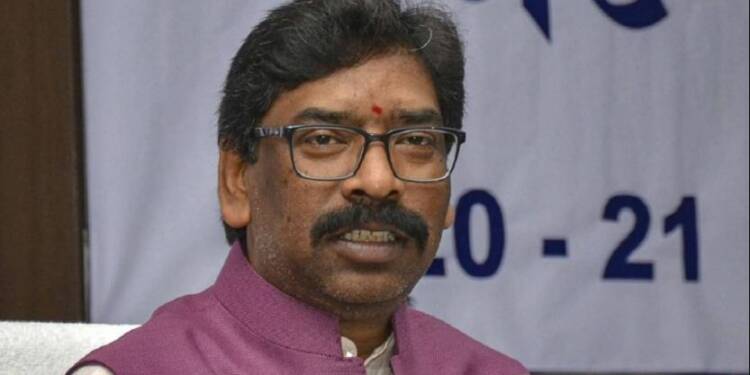Ever since coming to power in Jharkhand with the help of RJD and Congress, JMM leader and Jharkhand CM Hemant Soren has consistently tried to create a divide among tribals and Hindus of the state. He has often demanded a separate religious code for tribals of Jharkhand despite the fact that the community has followed Hinduism for many centuries.
Delivering a virtual lecture at the 18th Annual India Conference at Harvard University, Jharkhand CM Soren argued that tribals were never Hindus. “Adivasis were never Hindus and they never will be… where will the Adivasis go, whether he will write Hindu, Sikh, Jain, Muslim, Christian [in the census]… I came to know that these people [central government] have removed the ‘Others’ column. It seems they have to adjust in this only,” Soren said.
In Soren’s lecture, there was a complete disregard for the true facts and all he cared about to was to create a separate constituency of voters who will always be loyal to him. Hinduism is not a religion with one god, one scripture, and a set of commandants. It has evolved over time and nature worship, which is primarily associated with tribal people is an integral part of Hinduism.
From the worship of the Sun in different parts of the country to the worship of rivers – all are an integral part of Hinduism. The Hindus worship the land as the mother; ‘Dharti Mata’ who is offered ‘chadhava (offering)’ on all auspicious occasions. Moreover, even the tribals worship Tulsi Mata and cow, which are integral to the Hindus.
Also, Bhawan Shankar – the supreme deity of tribals, who is worshipped in the form of linga by them – similar to the Hindus, shows that there has been a lot of exchange between both the communities. Hinduism is more of an amalgamation of all these practices rather than a separate and unique identity.
Hinduism and the practice of the tribals are so inseparable that despite more than 200 years of attempts by missionaries and active support from politicians like Soren and Jaganmohan Reddy, a majority of the people of the community still identify themselves as Hindus.
Therefore, CM Soren’s attempt to create a divide between tribals and Hindus is futile and unjust. It might prove to be a political masterstroke for a short period of time, but in the long-term, it will harm the tribal community which is under attack from the conversion mafia.
Moreover, his attempts seem to backstab the biggest tribal leaders India has produced and in whose name Hemant Soren does his politics – Birsa Munda. Munda, who was converted to Christianity by missionaries, later got frustrated with the British as well as their religion and led a revolt against them. He was heavily influenced by a Shaivite saint and used to quote extensively from Bhagwat Gita and other Hindu scriptures.
Even before Soren was sworn in as the CM of Jharkhand, he had announced that the anti-conversion law, which prohibits forceful conversion, will be scrapped.
With political backing from Jharkhand Mukti Morcha, the forceful conversion activity has grown exponentially in the state in the last few decades. According to government data, the period of 2001-2011 witnessed a tremendous increase in the population graph of the state, but the most notable thing is that the population of Christians grew by a whopping 29.7%. The population of Muslims in the state grew by a massive 28.4% and the population of Hindus just by 21%.
The Raghubar Das government tried to slow down the conversion activity in Jharkhand with the introduction of an anti-conversion bill, but with Soren in power, it is picking up once again. With the demand for a separate religious code for tribals, Soren wants to give a free pass to the Christian missionaries in the state for conversion. The Hindu scrutiny, which has saved a lot of tribal people from getting forcefully converted, will be removed after they are classified as non-Hindus and the conversion mafia would get a free hand. Soren’s motive is to create a divide among Hindus and tribals of Jharkhand and create a permanent vote bank for himself.


































